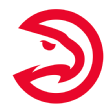AS SOON AS the NBA season had been indefinitely suspended due to the coronavirus pandemic, Drew Hanlen’s phone lit up with a FaceTime call. It was from one of his clients: Boston Celtics All-Star Jayson Tatum, who was looking for answers as to what was happening, and how to proceed.
Hanlen trains a number of NBA players, Joel Embiid and Bradley Beal among them. And while he was on the phone with Tatum, another called him.
Then another, until every one of his NBA clients had reached out to him.
“I had to call them all back,” Hanlen said with a laugh. “And they all asked the same question:
“‘How do we handle this break?'”
New health guidelines have forced people — including NBA players, strength and conditioning coaches and trainers — into new work patterns.
Players have been accustomed to working out at any hour at team facilities, with pristine basketball courts and state-of-the-art equipment, often with coaches and trainers. With the NBA now a week removed from closing those facilities, and all NBA employees strongly encouraged to practice self-quarantine, players, coaches and trainers face an unprecedented challenge: How do players work on their bodies and maintain their skills to return and play at the highest level on an undetermined date?
“The tough part is what you don’t know,” said Keith Jones, Houston Rockets senior vice president of basketball operations and a longtime athletic trainer. “You don’t know how long the runway is going to be before you’re full speed. A process that took 10 weeks [at the end of the offseason to ramp up to the regular season] might be compressed into 10 days. Getting their bodies conditioned to play again, we’re going to need some time.
“Nothing mimics NBA basketball except NBA basketball. Everybody’s going to lose that conditioning.”
MORE: When will the NBA return? Latest updates amid coronavirus suspension
WITH PLAYERS STUCK at home, their respective teams are having to get creative to minimize the drop-off in conditioning that a potential monthslong layoff presents.
The Chicago Bulls acted fast, sending out a workout plan to their players on the second day after the league suspended the season.
“Our strength and conditioning coach sent us a little program that has different types of lunges, different types of pushups and you do it at a high volume to get a little sweat going,” Bulls second-year center Wendell Carter Jr. said. “Nothing that anybody else can’t do.”
Javair Gillett, Houston’s director of athletic performance, emailed each Rockets player a detailed and customized program to follow — including strength training, flexibility training and cardio. An in-house app, typically used for the offseason, houses videos demonstrating each of the exercises so players know how to do them properly and avoid injury.
The Rockets also employed another customary offseason move, giving each player a duffel bag that included resistance bands, pulleys and an exercise ball.
“We’re trying to monitor,” Jones said, “and make sure they do the most they can with what they have.”
The Dallas Mavericks also have their own app, with director of athletic performance Jeremy Holsopple personalizing workouts for each player. During the season, custom workouts are displayed on an iPad in the weight room. Now workouts are tailored to the limited equipment each player has available.
Chelsea Lane, executive director, athletic performance and sports medicine for the Atlanta Hawks, said she and her staff prepared for the possibility of a shutdown. They are managing the fitness of the league’s second-youngest roster, one that had less workout equipment at home.
“You can get a lot of seriously good, quality work done with very little space, and very little equipment,” Lane said.
She and her staff sent several Hawks to sporting goods stores with personalized shopping lists to stock their homes and apartments with equipment necessary to keep them fit during the layoff.
“We want them to have some good, strong resistance bands, because when you have a resistance band, you can make any other weight you’ve got heavier, and you can make your own body weight heavier, and it takes up as much space as you do,” Lane said.
“And, if at all possible, some form of cardio equipment that allowed them to do interval training. Again, you can break the bank on that or you can go super budget on that. Some guys already have Peloton bikes in their homes.
“But another guy might have nothing and he might hate the bike, and honestly, for some guys to really get a burn, skipping rope goes a long way. And anyone can do that.”
The New Orleans Pelicans put together a daily cardio program they blast out to their players. And, thanks to smartwatches, they can judge how much work each of their players is getting.
“They’re pretty hard,” Aaron Nelson, the Pelicans’ vice president of player care and performance, said of the circuit workouts. “Most people have Apple Watches [synced to] their phones and they send your workout, your calories burned, so we can see if they’re getting into the right heart-rate zone.”
“When it comes to [closing] the facilities, I think we all need to understand that the teams and the leagues didn’t do this lightly.”
Chelsea Lane, Atlanta Hawks executive director, athletic performance and sports medicine
The Toronto Raptors were forced to self-quarantine for parts of the past two weeks due to being the last team to play the Utah Jazz, whose Rudy Gobert and Donovan Mitchell tested positive for the coronavirus.
So when Jon Lee, the team’s strength and conditioning coach, was allowed to resume normal activity early last week, he sprang into action.
“Once I was able to get out, I contacted my fitness supplier. … ‘I need this many bikes, I need this many dumbbells, I need this many benches, I need to order these bands,'” Lee said. “Then we put them all in a truck, and I started delivering them to the guys.
“I knocked on their doors [and dropped them off]. [Health department officials] made sure I had the proper social distance, so I left the bike at the door and said, ‘Hey, man, I’m going to send you a program right after this.'”
Lee added that he is putting together outdoor workouts that players do individually in backyards or open, vacant fields.
The Milwaukee Bucks took things a step further, dismantling their weight room and distributing exercise equipment and weights to each player, according to need and space available, particularly for players who have smaller living spaces near the arena.
Lee said he sought out bikes as cardio equipment for players, rather than treadmills.
“The bike is the easiest thing to move,” he said. “Some guys in Toronto live in condos and they might not be able to fit a treadmill, for example.”
GUIDING PLAYERS THROUGH rehabilitation presents a different set of challenges. The Mavericks currently have two players recovering from surgery: Dwight Powell, who ruptured his Achilles tendon in late January, and Jalen Brunson, who underwent right shoulder surgery on March 13.
Before the league closed down all team facilities last week, Powell and Brunson were the only players reporting to the Mavs’ facility, always alone and working with only one staffer. The area of the facility used for their rehab work was carefully sanitized before and after each individual session.
Since then, the Mavs have ensured Powell and Brunson have the equipment needed to keep their rehab plans on schedule.
“We’re just taking a little bit of a pause right now,” Mavericks director of player health and performance Casey Smith said. “We’ve been planning for this. We’re monitoring by video. What we’ve done is streamline it, kind of to the minimal effective dose that they need.
“We’re kind of lucky that these guys aren’t ramping up to return to play.”
Other players are using the break to heal up nagging injuries that they normally would be playing through at this point in the schedule.
Mavericks All-Star Luka Doncic had been receiving daily treatment for a right ankle that he has sprained twice this season, a sprained left thumb and a sprained right wrist. Two other Dallas starters — guard Seth Curry (ankle) and forward Dorian Finney-Smith (hip) — missed games due to injury going into the hiatus.
“Luka’s thumb and wrist will get better with rest,” Smith said. “That’s from getting hit. He’s not getting hit now. With Dorian’s hip, a few days off is what he needed. Unfortunately, he’s got it now.”
Maintaining players’ fitness also means ensuring they continue healthy eating habits. Before its facility closed, Houston’s team chef had been cooking breakfast and lunch for players each day. The team had shut down its normal buffet line, instead serving individual meals on a plate or in a to-go box. During the layoff, team dietitian Tara Boening has set up meal delivery services for some players. Pelicans players are all given a uniform weekly grocery list.
Atlanta, meanwhile, had already implemented some individualized meal plans before the hiatus. Players who didn’t already have their own personal chefs or meal plans are now discussing options with their teammates and utilizing those.
“We’ve had a lot of exchanging of chef numbers and meal-prep service information,” Lane said. “The guys who do, I will call them and say, ‘Do you like your guy? Is he working out for you? Could you share that number with everybody?'”
HANLEN STRESSED THE importance of still sending his players video breakdowns — something he does daily throughout a normal season — of potential playoff foes, so they can begin studying how to attack them if and when the postseason takes place.
He said his clients are treating the shutdown a lot like they would a shortened offseason.
“Most guys that are high-minute guys, at the conclusion of every season, they take four to six weeks off, and then they ramp up after that,” Hanlen said. “So, now, guys are dividing that by two.”
But the lack of reliable places to work out has added a heavy layer of uncertainty. Players without a hoop at home — the majority of the league — might end up going weeks or months without shooting a basketball.
“The tough part is finding a gym to shoot,” Jones said. “We’ve told them you don’t need to be playing. It’s just finding a place to get shots up and do your skill work.”
Lane said she believes her players understand the gravity of the situation, and won’t try to go outside of the rules when cities across the country are either urging residents to stay at home or under shelter-in-place orders.
“It’s my job to worry,” Lane said with a laugh. “I’m not specifically worried about our players. I’m worried about all people. I’m worried about all people not taking the advice we are currently being given, and not taking it seriously enough.
“When it comes to [closing] the facilities, I think we all need to understand that the teams and the leagues didn’t do this lightly.”
In the memo the league sent out last week announcing the facility closures, no specifics were given as to when they might reopen — or even when an update would be coming.
“I think the longer we’re off, the more time we will probably need [before we can come back],” Nelson said. “It is not like you can just say, ‘You have a week to get ready.’ And the league is going to do what’s right. I don’t question that at all.
“But, we have several months off between playoffs ending and training camp starting [for a reason]. We have to be careful that our guys are ready.”
ESPN’s Malika Andrews and Zach Lowe contributed to this story.


